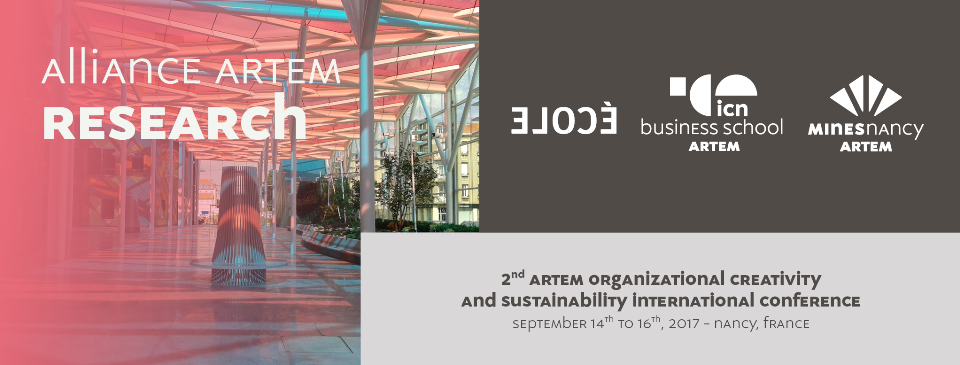
|
|
|
list of sub-themes > sub-theme 3SUB-THEME 3:CONNECTING CREATIVITY AND SUSTAINABILITY VIA HUMAN BODY: RE-CREATING CREATIVE AND SUSTAINABLE ORGANIZATIONAL BODIES THROUGH BODY-BASED MANAGEMENT LEARNING To upload your abstract, please log in. convenors: Takaya Kawamura Osaka City University, Japan
Anne Pässilä Lappeenrantaa University of Technology, Finland
Sue Mofat New Vic Theatre, Stoke on Trent, United Kingdomobjective: To discuss and experiment new possibilities to re-create creative and sustainable human bodies through body-based methods (theatrical drama, dance, music, cooking, etc.) for management learning related to such topics as entrepreneurship, business development, management, leadership, organization design, strategy and policy, and innovation. description: "Without doubt, the human body is a primary point of entry for people to become aware of the complex issues on the sustainability of civilization and the nature. While the modern organizations as “engines” of civilization are expected to provide good water, air, food, and cloths as well as good (quiet and sheltered) space to re-create and sustain our bodies, many have argued that the modern organizations also tend to “create” and “consume” human bodies as another type of “natural” resource (inner nature) to sustain themselves and the civilization. (e.g. Hassard et.al., 2000). Many have also emphasized the importance of embodied cognition and bodily motion such as tacit/implicit knowing, skills, expertise, and non-verbal communication in the organizational creativity. They have argued that the modern organizations can create new ways to re-create and sustain themselves, the civilization, and the nature if they succeed in re-creating and consuming these intellectual resources embodied in the participants. (e.g. Morgan, 1989; Varela et al., 1992; Nonaka and Takeuchi, 1995; McGilchrist, 2009; Taylor, 2012) There are many other ways to argue that human bodies are critical linking pins that connect organizational sustainability and creativity, and are simultaneously both the means and the ends, the inputs and outputs of organizational creativity and sustainability. In this sub-theme we will focus on these closely inter-dependent, partly circular, and sometimes paradoxical interrelations among human bodies, organizational creativity, and sustainability. We welcome diverse forms of contribution (paper, exercises, games, performances and installations) by participants from a variety of cultural, occupational, and disciplinary origin. Inspired by these contributions, we will discuss and experiment various new possibilities to re-create creative and sustainable human bodies through body-based methods (theatrical drama, dance, music, cooking, etc.) for management learning related to such topics as entrepreneurship, business development, management, leadership, organization design, strategy and policy, and innovation." keywords: Activity theory, Learning, development, creativity, sustainability, organizations. references:
Hassard, J., R. Holliday, and H. Willmott (eds.) (2000). Body and Organization, Sage Publications. McGilchrist, I. (2009). The Master and His Emissary: The Divided Brain and the Making of the Western World, Yale University Press. Morgan, G. (1989).Creative Organization Theory: A Resourcebook, Sage Publications. Nonaka, I., and H. Takeuchi (1995). The Knowledge-Creating Company: How Japanese Companies Create the Dynamics of Innovation, Oxford University Press. Taylor, S. S. (2012). Leadership Craft, Leadership Art, Palgrave Macmilan. Varela, F. J., E. Rosch, and E. Thompson (1992). The Embodied Mind: Cognitive Science and Human Experience, MIT Press. |

